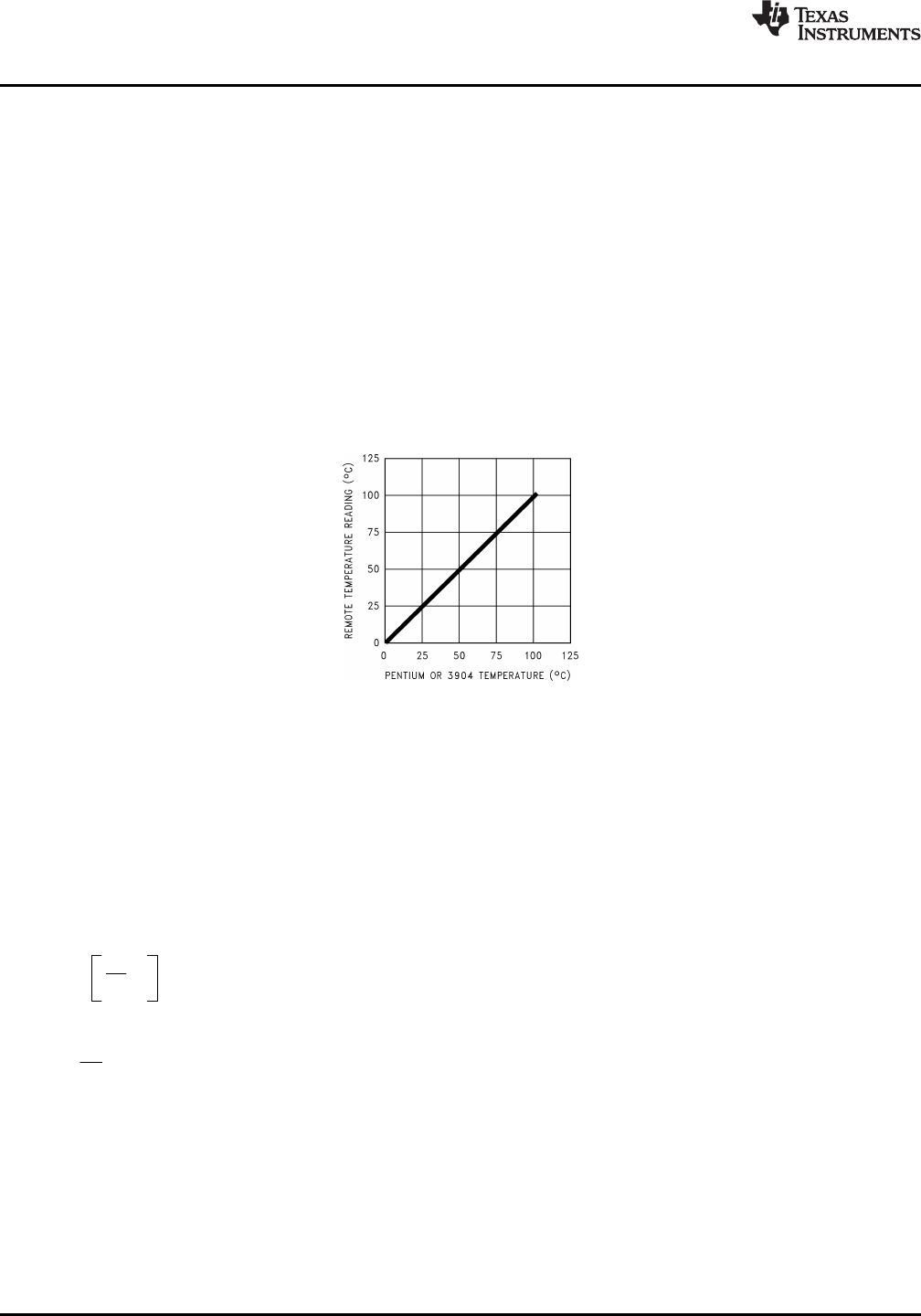Datasheet
Table Of Contents
- Features
- Applications
- Key Specifications
- Description
- Absolute Maximum Ratings
- Operating Ratings
- Temperature-to-Digital Converter Characteristics
- Logic Electrical Characteristics
- DIGITAL DC CHARACTERISTICS
- SMBus DIGITAL SWITCHING CHARACTERISTICS
- Functional Description
- LM86 REGISTERS
- COMMAND REGISTER
- LOCAL and REMOTE TEMPERATURE REGISTERS (LT, RTHB, RTLB)
- STATUS REGISTER (SR)
- CONFIGURATION REGISTER
- CONVERSION RATE REGISTER
- LOCAL and REMOTE HIGH SETPOINT REGISTERS (LHS, RHSHB, and RHSLB)
- LOCAL and REMOTE LOW SETPOINT REGISTERS (LLS, RLSHB, and RLSLB)
- REMOTE TEMPERATURE OFFSET REGISTERS (RTOHB and RTOLB)
- LOCAL and REMOTE T_CRIT REGISTERS (RCS and LCS)
- T_CRIT HYSTERESIS REGISTER (TH)
- FILTER and ALERT CONFIGURE REGISTER
- MANUFACTURERS ID REGISTER
- DIE REVISION CODE REGISTER
- APPLICATION HINTS
- Data Sheet Revision History

V
t
=
k T
q
I
F
= I
S
e - 1
V
be
KV
t
LM86
SNIS114E –DECEMBER 2001–REVISED MARCH 2013
www.ti.com
APPLICATION HINTS
The LM86 can be applied easily in the same way as other integrated-circuit temperature sensors, and its remote
diode sensing capability allows it to be used in new ways as well. It can be soldered to a printed circuit board,
and because the path of best thermal conductivity is between the die and the pins, its temperature will effectively
be that of the printed circuit board lands and traces soldered to the LM86's pins. This presumes that the ambient
air temperature is almost the same as the surface temperature of the printed circuit board; if the air temperature
is much higher or lower than the surface temperature, the actual temperature of the of the LM86 die will be at an
intermediate temperature between the surface and air temperatures. Again, the primary thermal conduction path
is through the leads, so the circuit board temperature will contribute to the die temperature much more strongly
than will the air temperature.
To measure temperature external to the LM86's die, use a remote diode. This diode can be located on the die of
a target IC, allowing measurement of the IC's temperature, independent of the LM86's temperature. The LM86
has been optimized to measure the remote diode of a Pentium III processor as shown in Figure 15. A discrete
diode can also be used to sense the temperature of external objects or ambient air. Remember that a discrete
diode's temperature will be affected, and often dominated, by the temperature of its leads.
Figure 15. Mobile Pentium III or 3904 Temperature vs LM86 Temperature Reading
Most silicon diodes do not lend themselves well to this application. It is recommended that a 2N3904 transistor
base emitter junction be used with the collector tied to the base.
A diode connected 2N3904 approximates the junction available on a Pentium III microprocessor for temperature
measurement. Therefore, the LM86 can sense the temperature of this diode effectively.
DIODE NONIDEALITY
Diode Nonideality Factor Effect on Accuracy
When a transistor is connected as a diode, the following relationship holds for variables V
BE
, T and I
f
:
(1)
where:
(2)
• q = 1.6×10
−19
Coulombs (the electron charge),
• T = Absolute Temperature in Kelvin
• k = 1.38×10
−23
joules/K (Boltzmann's constant),
• η is the nonideality factor of the process the diode is manufactured on,
• I
S
= Saturation Current and is process dependent,
• I
f
= Forward Current through the base emitter junction
• V
BE
= Base Emitter Voltage drop
In the active region, the -1 term is negligible and may be eliminated, yielding the following equation
22 Submit Documentation Feedback Copyright © 2001–2013, Texas Instruments Incorporated
Product Folder Links: LM86










